We moved to Lisbon in 2019. Now we’re sharing our top tips for eating in Portugal. These tips will help you eat well during your trip and focus on more important things… like wine.
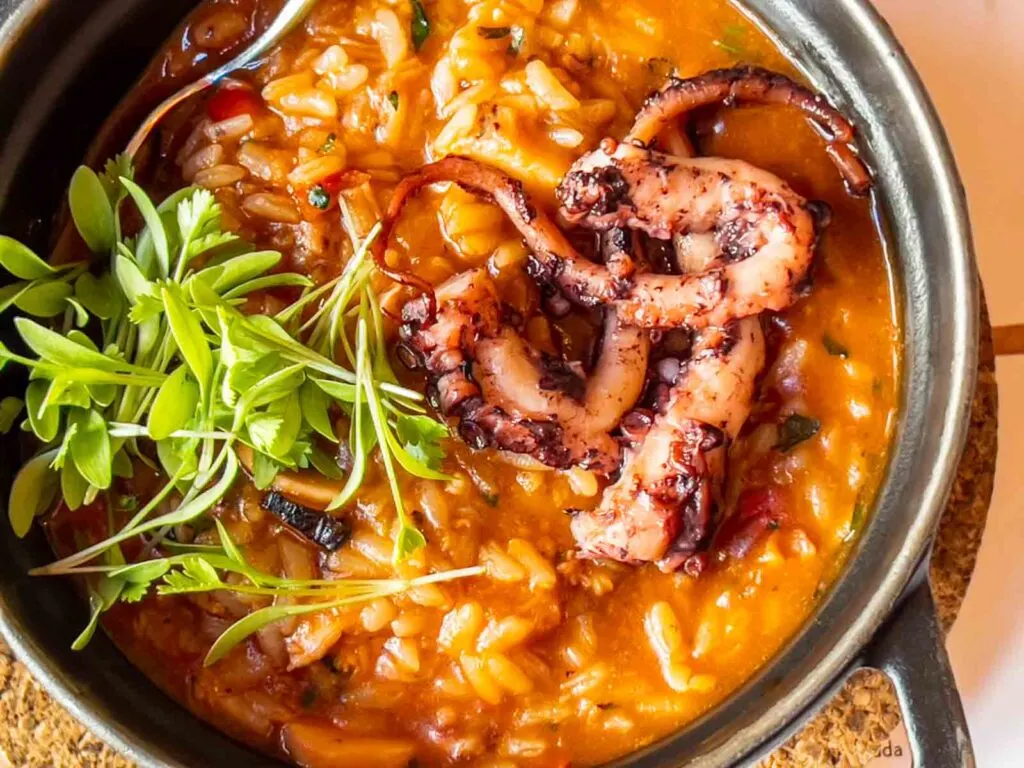
You bought the plane ticket and planned your Portugal itinerary. But have you thought about eating in Portugal during your vacation? If so, great. If not, the time to start is now.
Most people aren’t familiar with Portuguese food like they are with Italian, Japanese and even Spanish food. (While Spain and Portugal food have their commonalities and close geography, there are definitive differences between the two cuisines.) And, as we all know, eating local food is one of the best things to do while traveling.
Pro Tip
Dive into Portuguese food with a food tour.
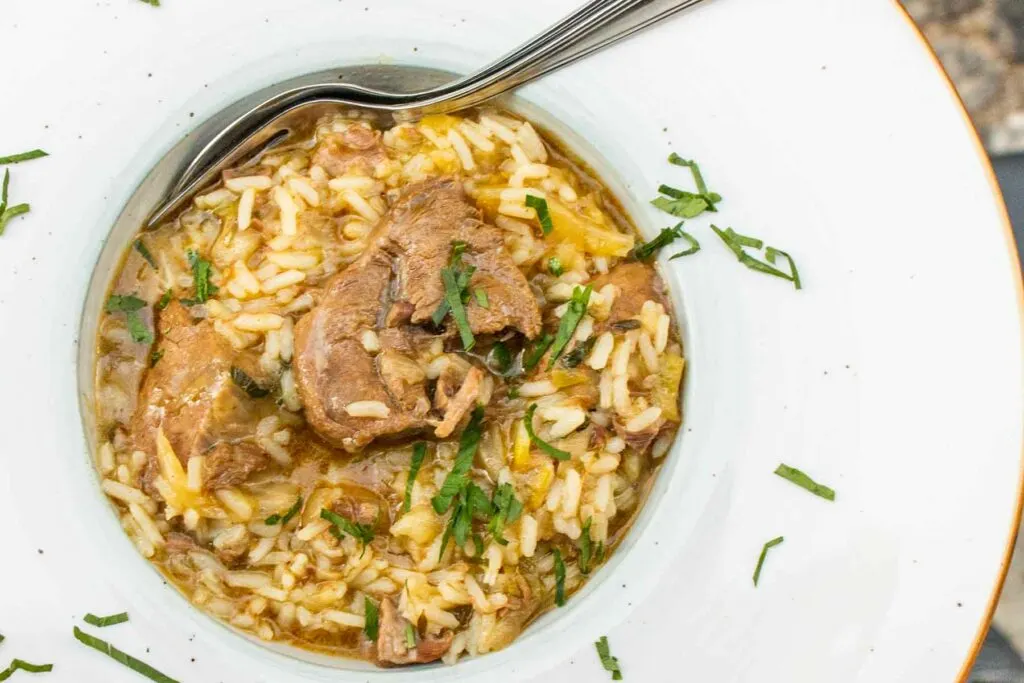
Since moving to Lisbon, we’ve learned how to eat like Portuguese locals. We often cook at home but we eat out frequently too. Both have their challenges and rewards.
Despite what you may have read elsewhere, there’s such a thing as bad Portuguese food. While food is one of our favorite aspects of living in Portugal, not everything we eat is great here. The key is to know what to look for, and more importantly, what to avoid.
Discover our Portuguese food favorites.
Eating In Portugal – 14 Do’s
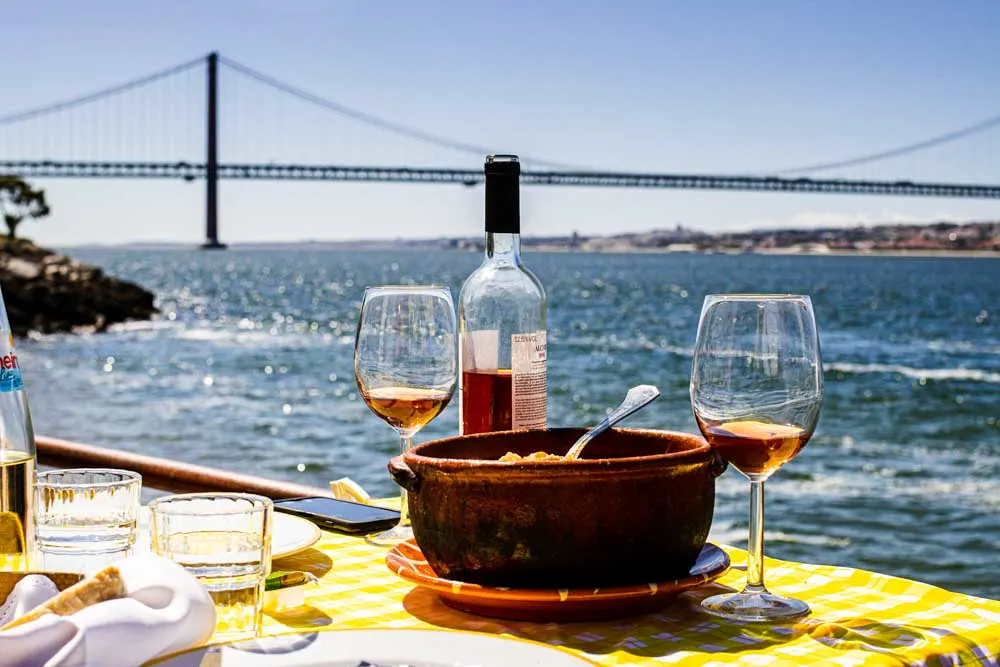
Eating in Portugal can be either wonderful or disappointing depending on what and where you eat. It also depends on how you eat.
We’ve eaten a lot of Portuguese food since we moved to the Iberian country in 2019 and we’ve learned more than a few things along the way. These are our top tips on how to eat well whether you’re planning a trip for a few days, a few weeks or even longer:
1. Learn A Few Key Portuguese Phrases
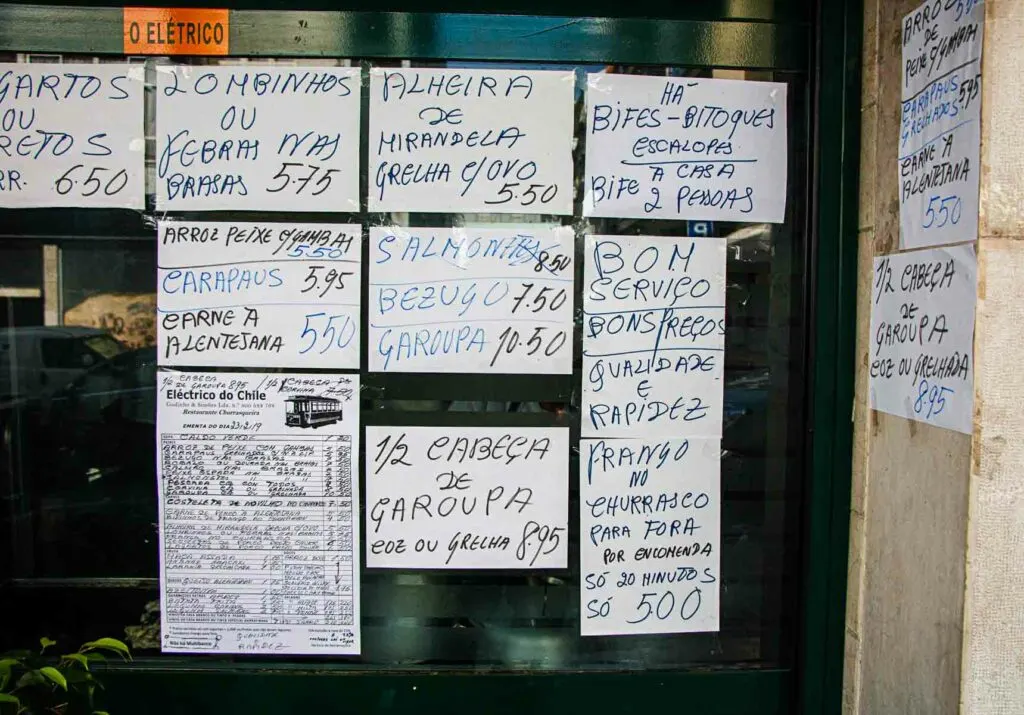
Learning the Portuguese language, a latin-based idiom filled with phonic challenges, is a worthwhile project that takes both time and effort. Luckily for travelers, most Portuguese people speak English at either a basic or advanced level. This is especially the case with those who work in the hospitality industry.
That being said, while mastering Portuguese isn’t feasible in a couple weeks or months, it’s certainly possible to learn some key phrases to use at restaurants. Here are a few to get you started:
You will find the following word translations helpful as well:
Pro Tip
Check out Practice Portuguese if you want learn Portuguese in a meaningful way. It’s the best way to learn the European language regardless of where you’re located in the world.
2. Make Restaurant Reservations
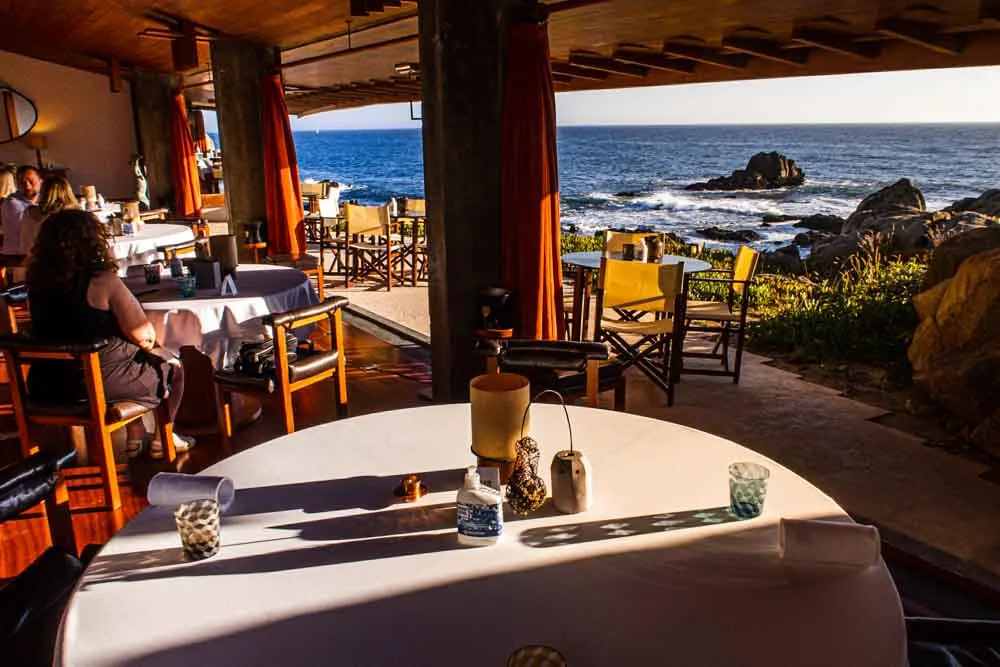
We get the desire to be spontaneous while on vacation. Making plans is something we expect to do while working, not playing.
However, after decades of travel, we also know that better European restaurants require reservations, particularly on weekends and during busy travel seasons. Portugal is no exception to this rule especially in Lisbon and Porto.
Pro Tip
Don’t expect to walk into a restaurant that told you it’s “full”. When a Portuguese restaurant is full, it’s really full.
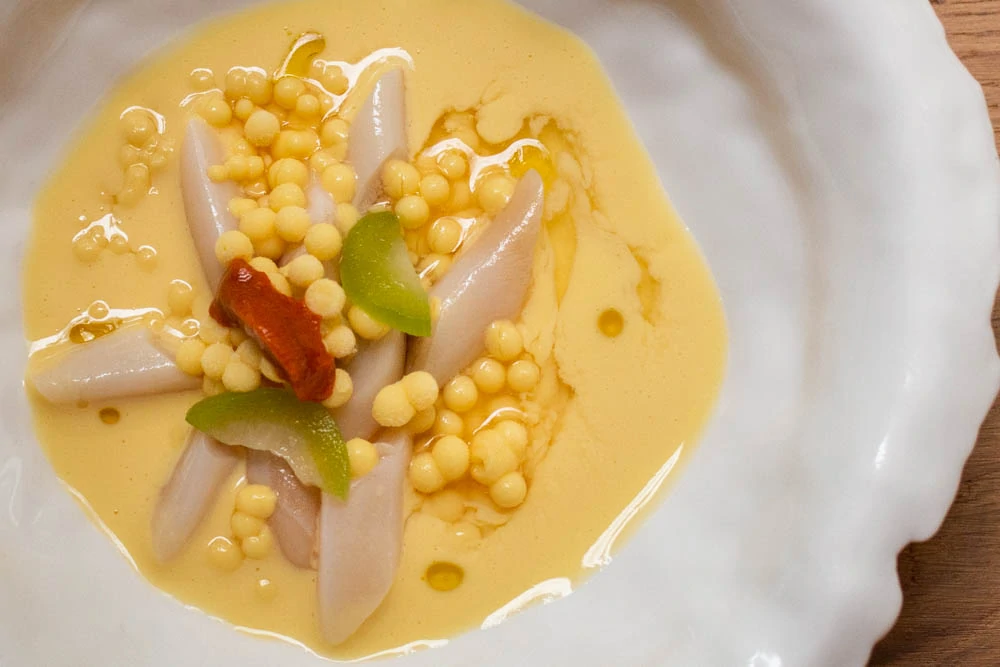
To be clear: You should make reservations at restaurants where you really want to eat in Portugal. Otherwise, you may end up eating at McDonald’s, Burger King or a local kebab shop. And, FYI, those two American fast food chains are far better in their homeland.
Pro Tip
It’s not too soon to make reservations at Portugal’s 37 Michelin-starred restaurants. Most take online reservations or you can also call. We recommend using a Skype account for international calls. It’s an inexpensive way to call restaurants directly if you don’t have international phone service.
3. Start Your Mornings With A Pastel de Nata

We still remember the first time we ate our first pastel de nata breakfast in Portugal. We felt like we discovered something really special. But, as it turns out, we weren’t unique. It’s something that all tourists do whether they’re in Porto or on an island in the Azores. However, the smartest tourists do this in Belém where Portugal’s signature pastry was invented by crafty clergy in the 18th century.
You won’t have any problem finding a pastel de nata in Portugal. Not only are the sweet, creamy, yolky tarts in bakeries (pastelarias) in every Portuguese city, but they’re also at cafes, hotels and even airports. Eat many to find your favorite. You’ll be walking and traversing endless hills during your trip which will help negate the calories.
Discover our favorite pastel de nata shops in Lisbon.
4. Order Locally And With The Season
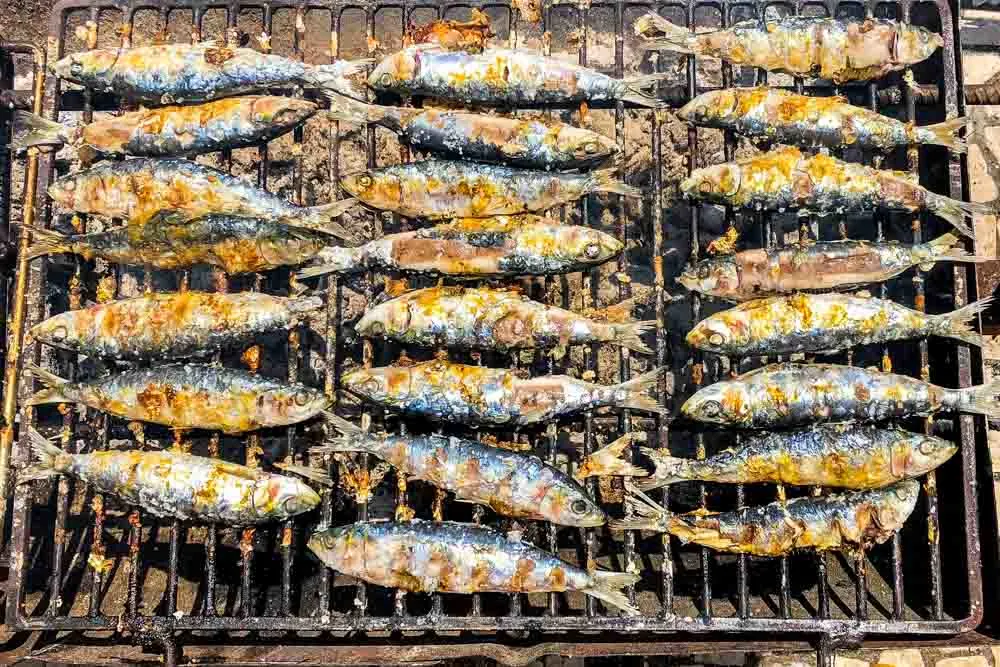
Eating local, seasonal food isn’t just good for Portugal’s environment. It’s also good for the taste buds.
Seasonal eating in Porgugal goes beyond munching on fruits and vegetables. We love eating sardines (sardinha) in June and July as well as snails (caracóis) in May. You won’t have to look hard to find either – both are spring and summer staples at neighborhood restaurants (tascas) throughout the country.
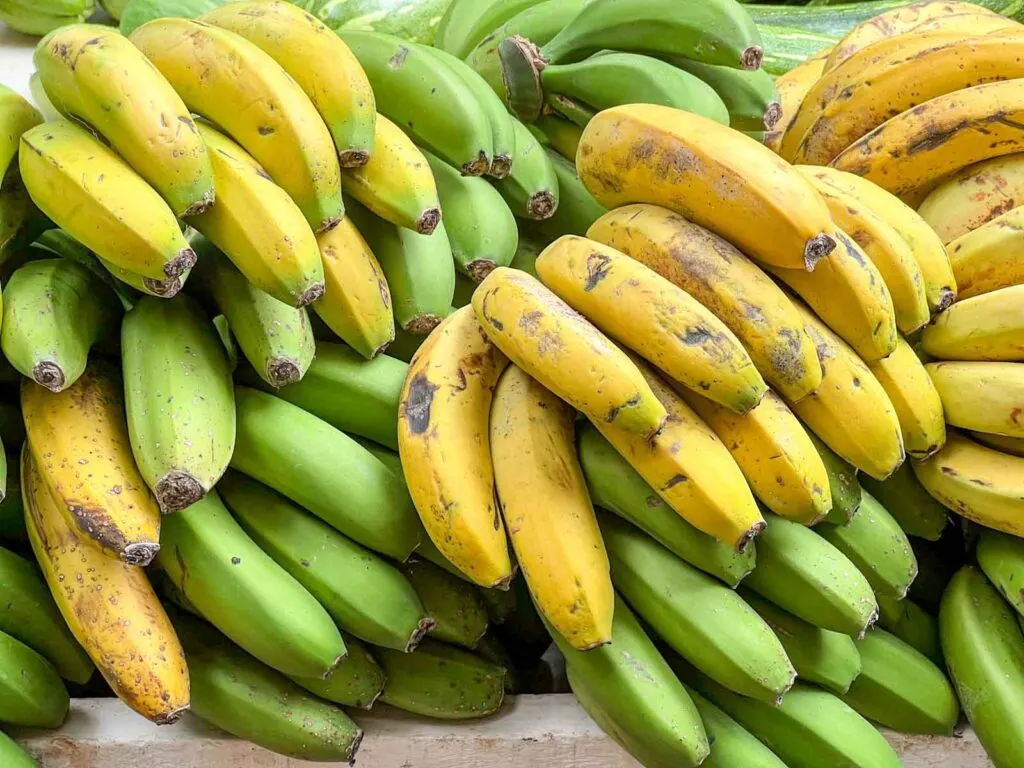
From a local perspective, we’re talking about eating limpets (lapas) and bananas (bananas) in Madeira where both abound. While you’ll want to eat limpets covered in garlic butter, Madeira bananas, which we believe to be the best in the world, are great on their own.
And, of course, you’ll want to eat tripas à moda do Porto in its home city of Porto unless you’re not into eating offals. However, the dish is a must for adventurous diners to try at least once.
Pro Tip
Attend the annual Lisbon sardine festival honoring St. Anthony if your Portugal trip is in June. The city becomes a ginormous sardine restaurant during the festival which has to be experienced to be believed.
5. Dine At Neighborhood Tascas
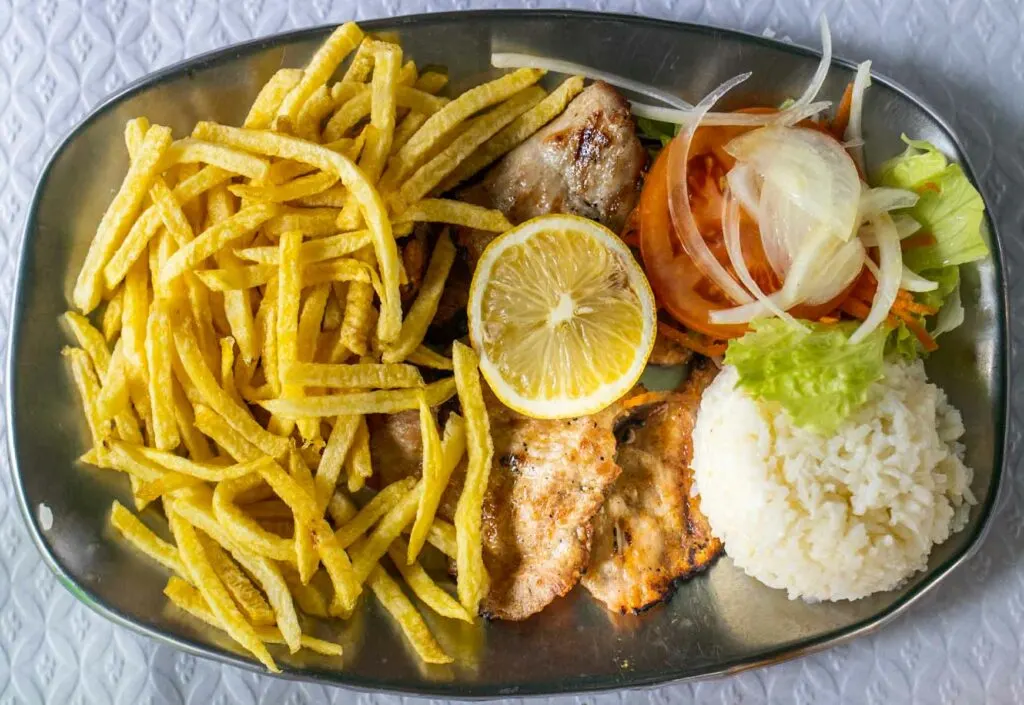
Tascas aren’t fancy and their menus typically feature hearty dishes served with two different carbs. They’re the kind of places where tablecloths are made of paper, wine is served in jugs and walls are adorned with quirky memorabilia. And, yet, tascas are some of the best places to eat Portuguese food in Portugal.
Typical tasca dishes include salt cod (bacalhau à brás) with potatoes, boiled meat (cozido) which is the Portuguese version of France’s pot au feu and grilled fish. We often order Iberian black pork (porco preto) and duck rice (arroz de pato) when we chow down at tascas in Lisbon. We also order sparkling water (água com gás) and wine (vinho) to wash the food down.
Pro Tip
Check out the tasca‘s daily special (prato do dia) before you place your order.
6. Order The Prato Do Dia
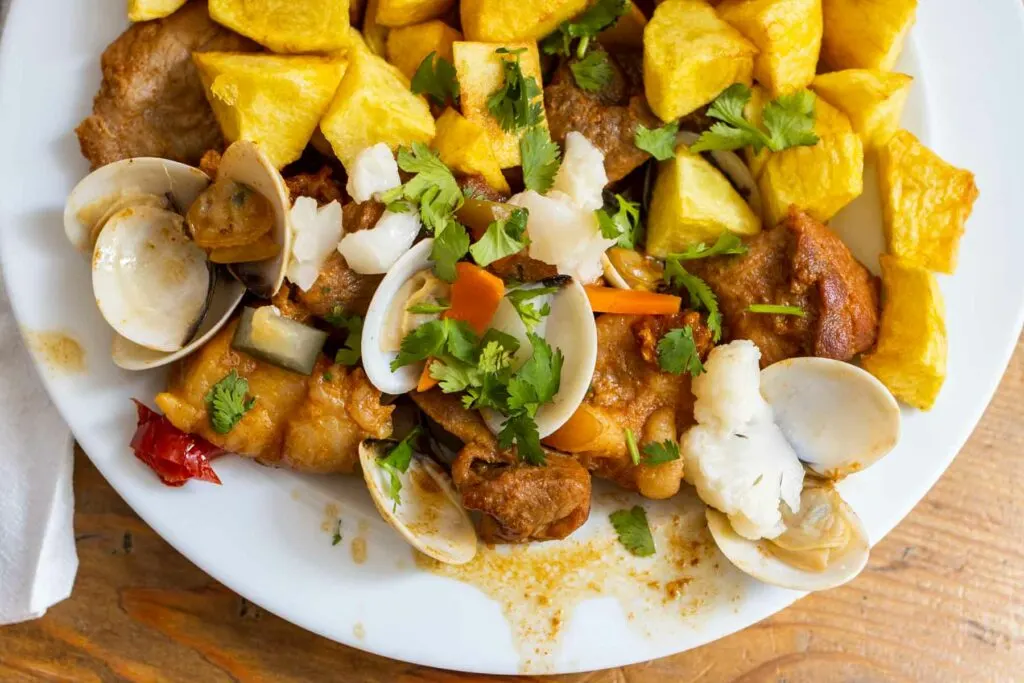
Cheap eats fans will love this tip which involves ordering the prato do dia at tascas. Often handwritten on the menu or a blackboard, these daily specials are wonderful values that are big in size but small in price. Sometimes, they’re even big enough to share.
Some pratos do dia are multi-course affairs which include soup, wine and dessert. Others are just a big plate of food. Either way, they’re typically filling meals that will take you all the way to dinner.
Pro Tip
Some pratos do dia are served on specific days of the week.
7. Carry Cash

We like to pay our restaurant bills with credit cards unless it’s not possible. That’s when it’s clutch to have a Portuguese debit card or cash. Since most tourists don’t have Portuguese debit cards, carrying cash is probably your best option.
You won’t need a lot of cash. You’ll just need enough to cover your check if a restaurant doesn’t take credit cards or if a credit card machine is suddenly not working. Yes, that happens every once in a while.
Interestingly, we’ve noticed more-cash only establishments in the Algarve compared to big cities like Lisbon and Porto. We don’t know why but it’s good to know.
Pro Tip
Choose euros when given the choice between paying your credit card with euros or dollars. You’ll likely be charged an unfavorable exchange rate if you don’t follow this pro tip.
8. Eat All The Sandwiches
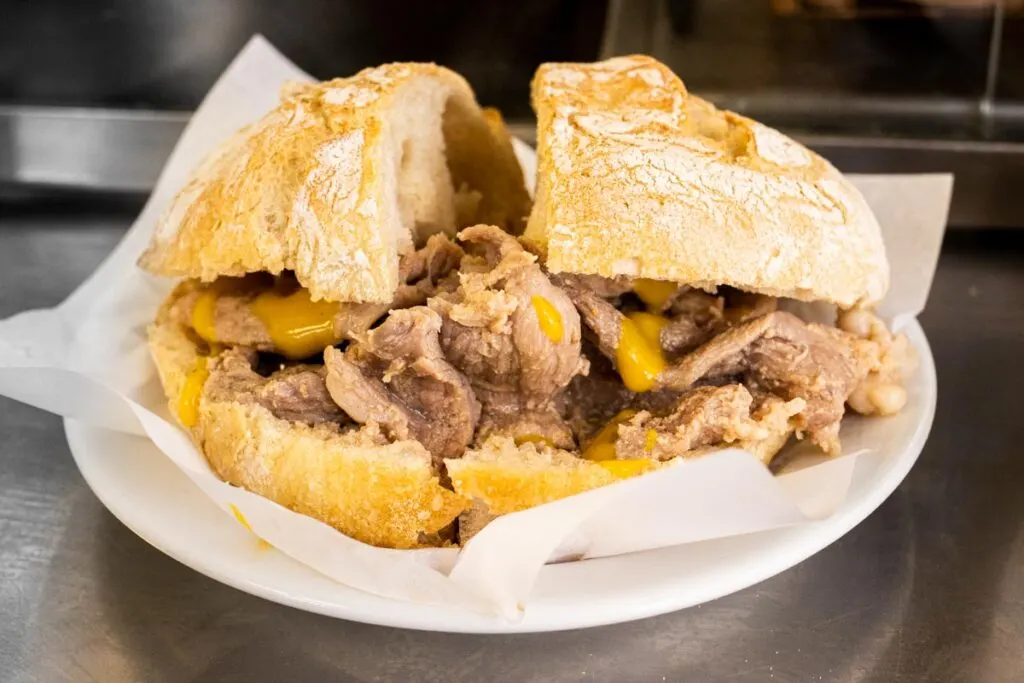
Many countries have a signature sandwich. Portugal isn’t one of those countries. Instead, Portugal has multiple sandwiches in its culinary coffer.
The bifana, braised pork slices on a roll, is probably the easiest sandwich to find in Portugal but it’s not the most famous. That honor goes to the francesinha, a monster of an open-faced sandwich that’s filled with steak, ham, chourićo and sausage before it’s covered with melted cheese, tangy tomato sauce and a fried egg.
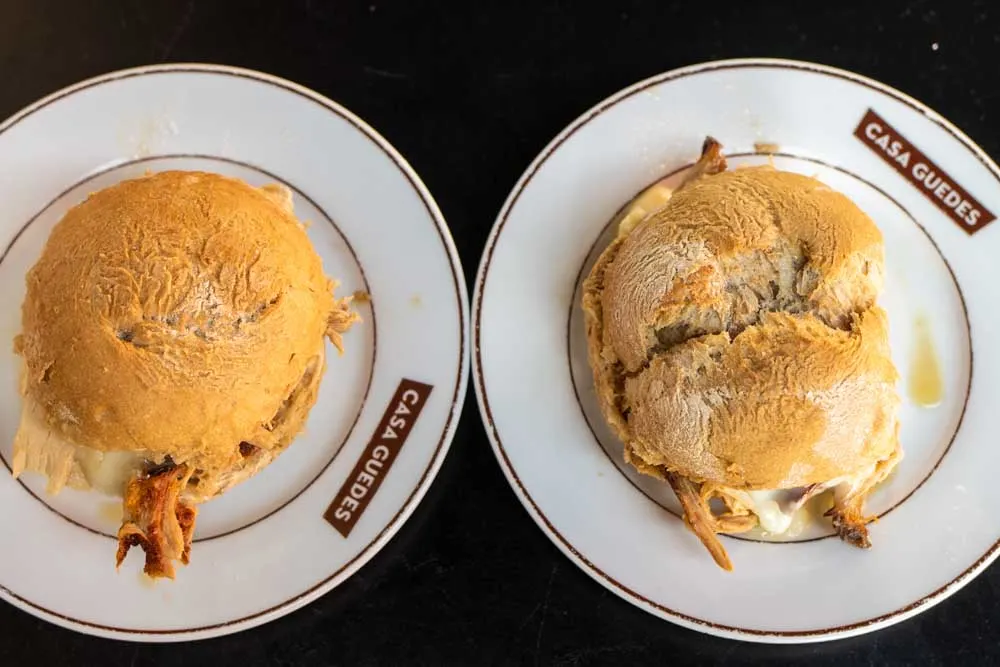
Other popular Portuguese sandwiches include the medium rare, sliced steak sandwich called prego, the pressed, grilled hot dog called cachorrinho and the pernil com queijo which pairs slow-cooked pork leg meat with ooey-gooey Serra da Estrela cheese. Just thinking about these sandwiches makes us hungry.
Pro Tip
You can try all of these sandwiches and more in Porto, a city where cooks seem to understand the sandwich concept better than other food-focused Portuguese cities.
9. Embrace Eggs
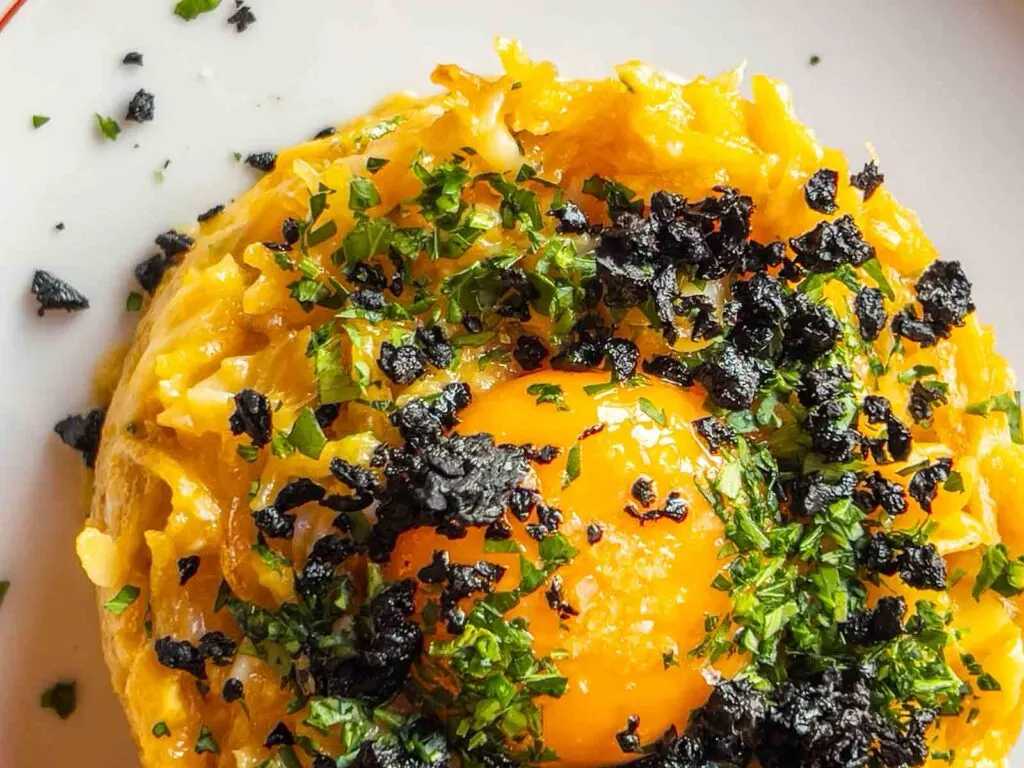
Eggs are ubiquitous in Portuguese food.
They’re in savory dishes like bacalhau à brás, the iconic salt cod dish made with potatoes, and they’re served on top of steak (commonly referred to as a cavalo or on horseback). However, eggs take center stage when it comes to Portuguese desserts.
We can’t over-emphasize the prevalence of eggs in Portuguese desserts. But why?
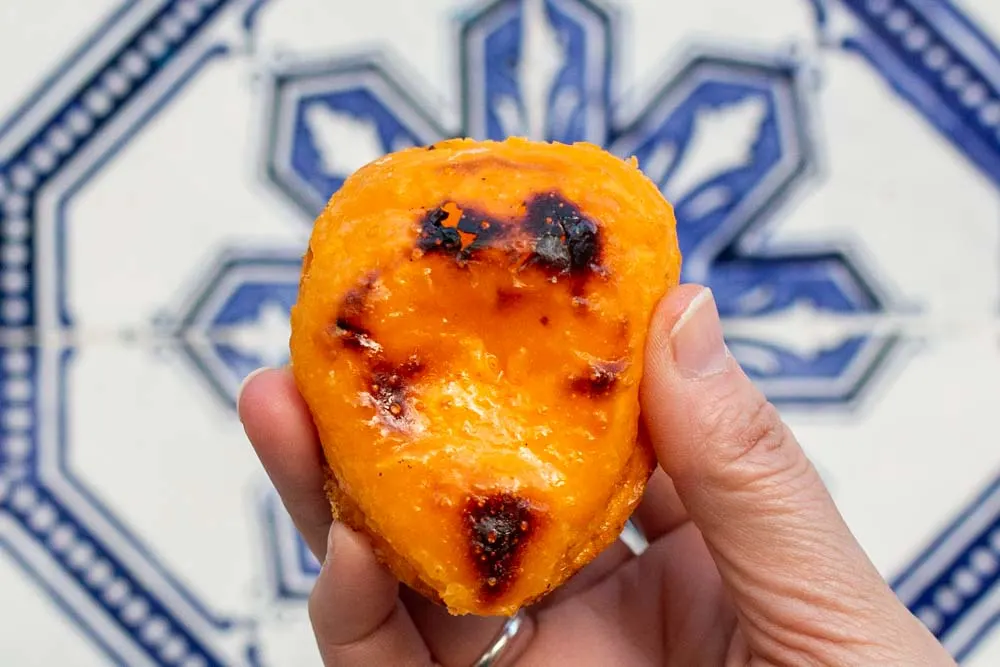
It all goes back centuries when egg whites were used to starch habits for the country’s many nuns. To avoid waste, the leftover egg yolks were added to a myriad of pastries known as conventual sweets.
The pastel de nata may be the the most famous conventual sweet but it’s not the only one. You won’t want to miss tasting ovos moles, a dessert so eggy that its name translates to soft eggs. Though its roots are in Aveiro, people eat ovos moles throughout Portugal.
Fun Fact
Aveiro isn’t just famous for its ovos moles pastries. It’s also famous for colorful boats (barcos moliceiros) that sail on its canals.
10. Love The ‘Pus
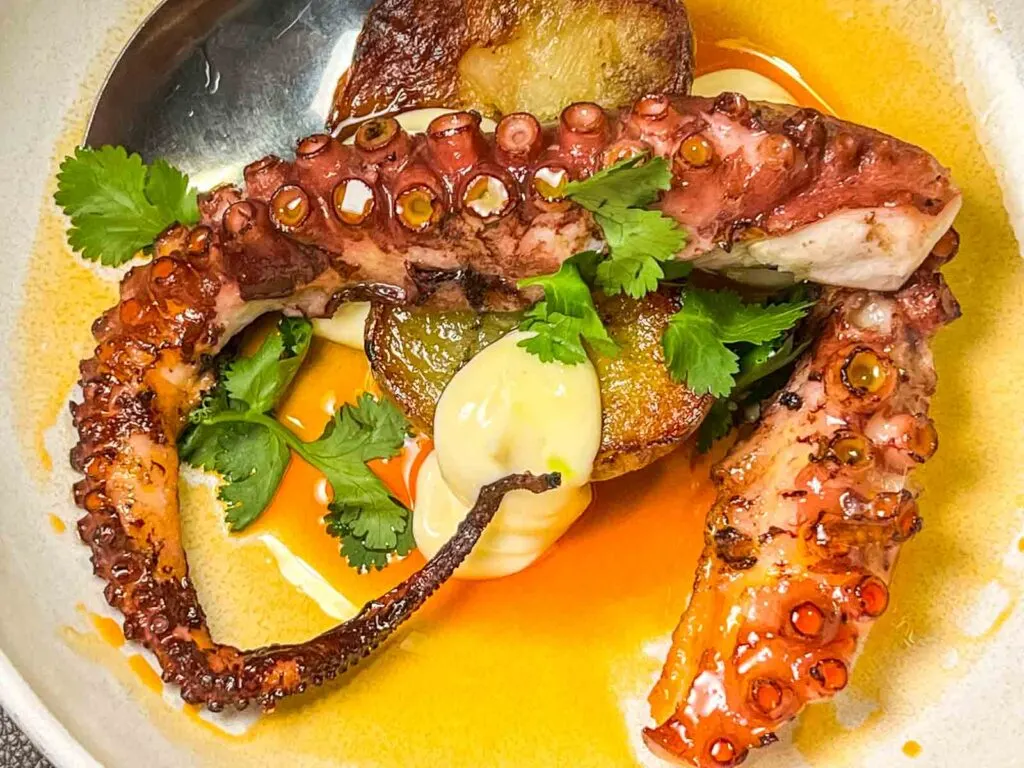
True story – We have friends who visited Portugal and ate octopus every day for two weeks. That, in a nutshell, is how strong Portugal’s octopus game is. And no Portuguese octopus dish is more popular than polvo à lagareiro.
Nothing short of a show stopper, polvo à lagareiro consists of large roasted tentacles atop a bed of roasted potatoes. Beyond octopus (polvo), potatoes (batatas) and olive oil (lagareiro), the dish’s other ingredients include onion, garlic, bay leaves and salt.
Pro Tip
Don’t just eat polvo à lagareiro in Portugal. You can also eat octopus that’s grilled, in salads and mixed with rice (arroz de polvo). We recommend trying them all.
11. Try Salt Cod And Tinned Fish
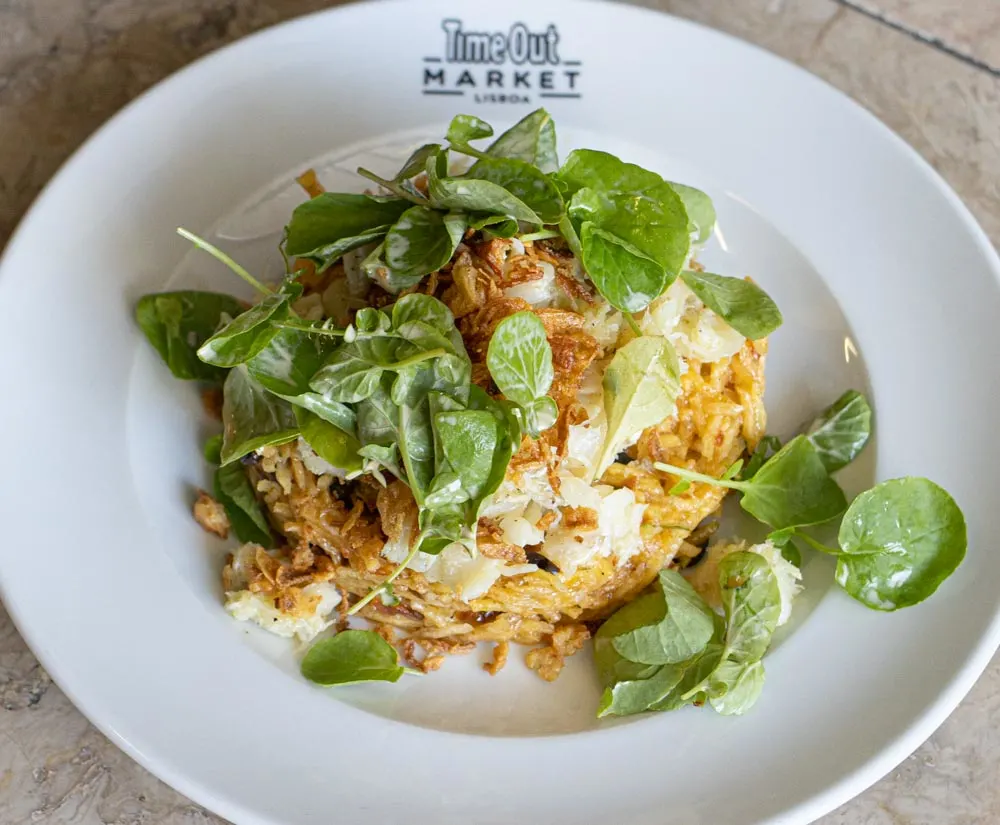
We get the temptation to eat fresh seafood in Portugal. It’s a no-brainer for Americans who can’t get enough octopus (see above) as well as shrimp, mussels, clams and crabs.
But fresh seafood isn’t the only seafood to eat in Portugal. You also need to try salt cod (bacalhau) and tinned fish (conservas). Ironically, these two Portuguese specialties are local favorites despite the country’s abundance of fresh seafood.
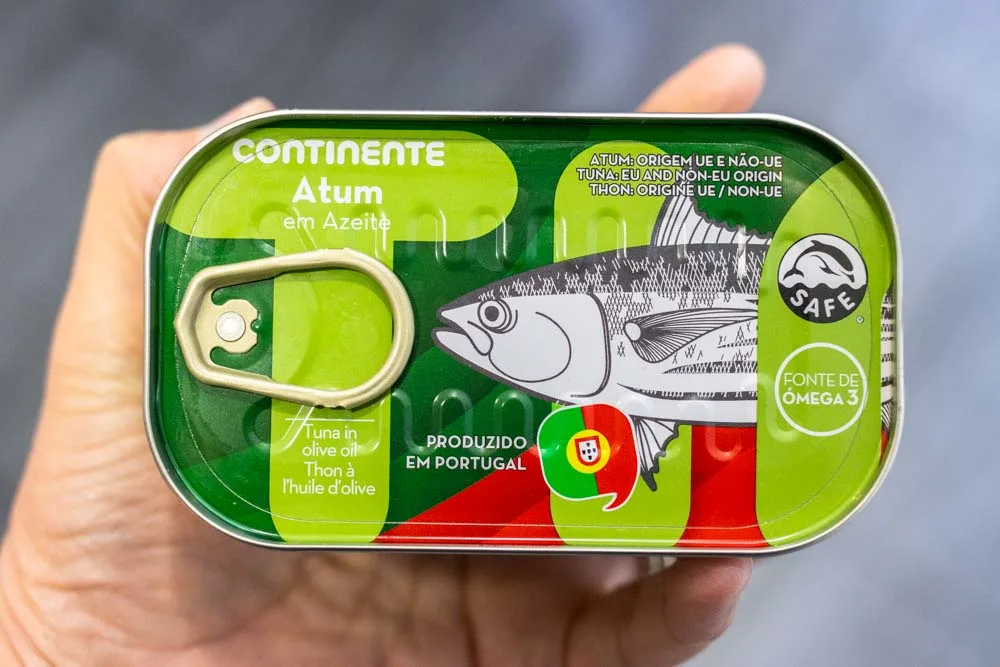
Bacalhau has been an integral part of the Portuguese diet for centuries, dating back to the days before refrigeration was a thing. While those days are over, Portuguese people still have a thing for salt cod as well as for preserved fish stored in tins.
Sardines (sardinhas) are the most popular tinned fish in Portugal. Other conserva options include tuna (atum), mackerel (cavala) and codfish (bacalhau).
Pro Tip
Buy colorful fish tins as edible souvenirs of your time in Portugal.
12. Spice Things Up With Piri Piri Sauce
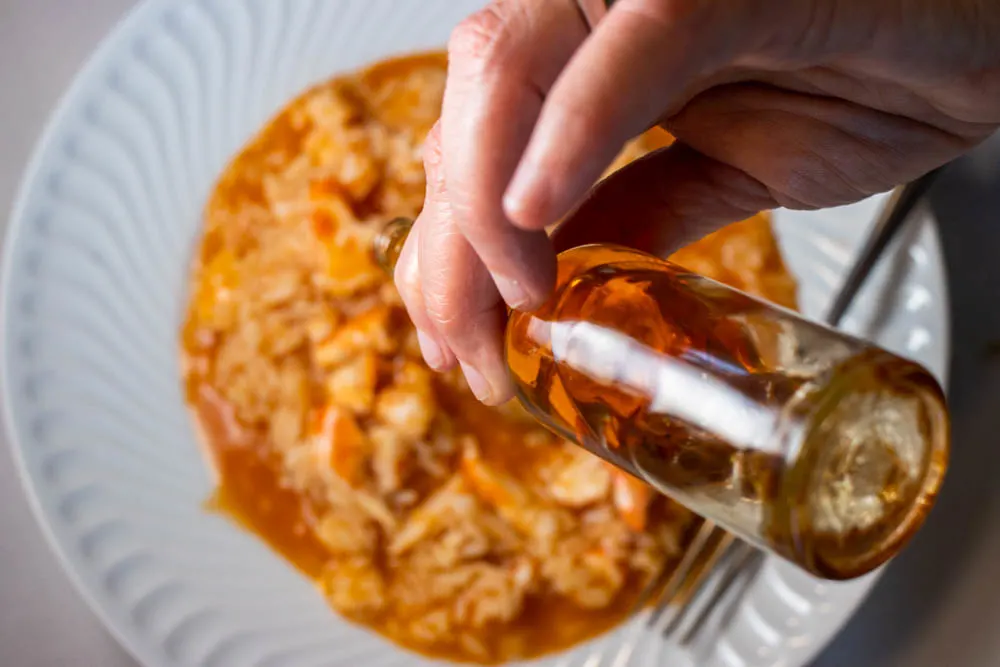
Most Portuguese food, as is the case with most food in Europe, isn’t spicy (or picante as they say in Portuguese). There are some exceptions but those usually involve global cuisines like Indian or Sichuan Chinese food. The takeaway is to request piri piri sauce when you dine at tascas and other casual eateries in Portugal.
With roots in Africa, piri piri sauce has a long history that involves Portuguese explorers who traversed the world and Mozambican immigrants who brought the spicy sauce along for the ride. While chili peppers originated in the Americas, it’s unclear whether it was the Portuguese or Spanish who originally brought them to Africa.
We first encountered piri piri hot sauce in Cape Town where Portuguese food is popular. Apparently, it’s also available at Nando’s which isn’t a surprise since Nando’s is a South African restaurant chain.
Fun Fact
Piri Piri translates to Pepper Pepper in Swahili.
13. Drink Wine At (Almost) Every Meal
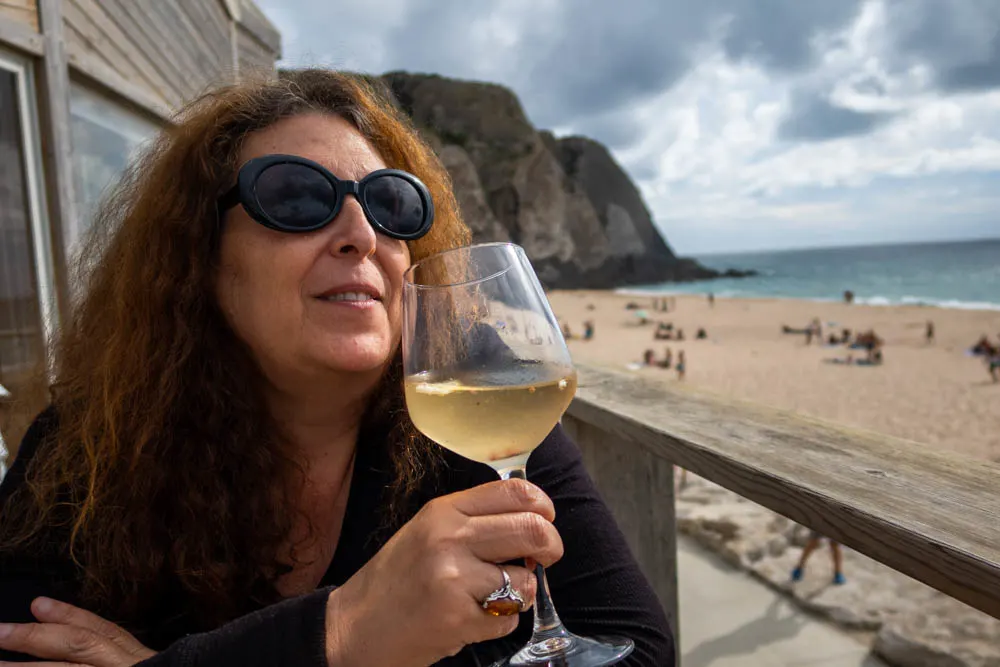
A meal without wine in Portugal has a name and that name is breakfast. We’re kidding, sort of. That’s how popular and cheap wine is in Portugal. But, make no mistake, Portuguese wine is a pleasure to sip both with food and on its own.
You may have encountered Vinho Verde outside of Portugal but that green wine produced from Alvarinho grapes is far from the only Portuguese wine varietal. The country has 14 distinct wine regions including the Algarve in the south, Alentejo in the east and Douro, Dão and Minho in the north.
Pro Tip
While you can order a cheap pitcher of house wine during lunch at a tasca, you’ll want to dive deeper into Portuguese viticulture by ‘splurging’ on a bottle from one of Portugal’s 14 wine regions at dinner. If you have two weeks, you can hypothetically try them all.
14. Save Room For Dessert
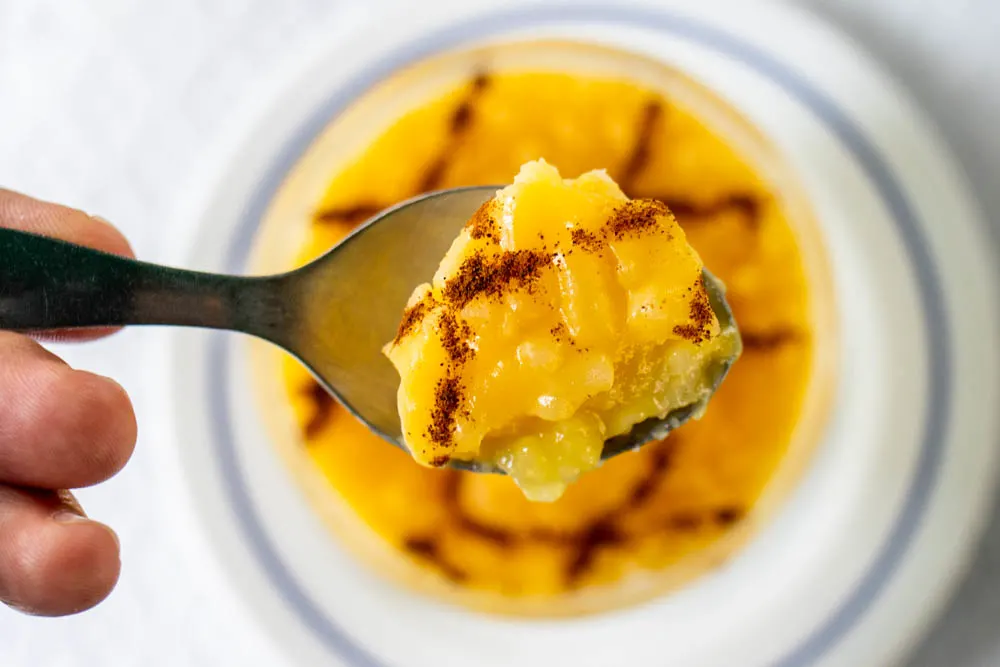
We saved our sweetest ‘do’ for last as is often the case with dessert (sobremesa). However, we won’t judge you if you eat desserts all day long in Portugal. It would certainly be easy to do considering the vast number of pastelerias in the country.
Plus, since egg yolk is a key ingredient in many Portuguese desserts and pastries, you could argue that Portuguese desserts count as protein. Your argument would be a stretch considering the vast amounts of sugar in Portuguese sweet treats. However, we’d commend you for your effort.
Discover our favorite Portuguese desserts.
Eating in Portugal – 8 Don’t’s
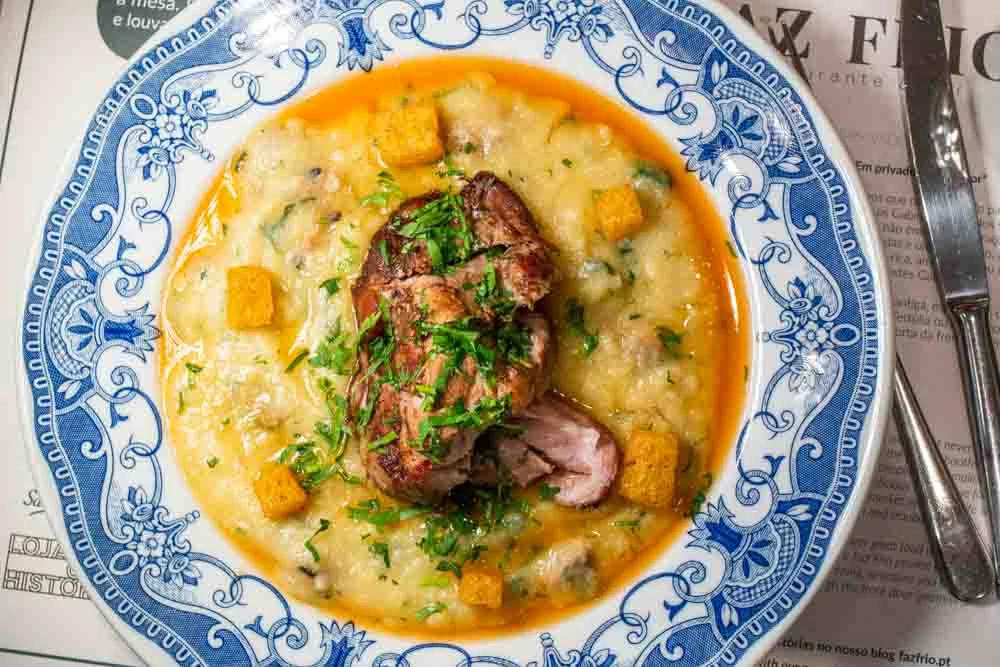
Now that you know our top tips regarding how to eat in Portugal, it’s time to learn our top tips for how not to eat in Portugal. In some ways, the following tips are our most important tips starting with an explanation of Portugal’s tipping protocol:
1. Don’t Feel Compelled To Leave A Tip
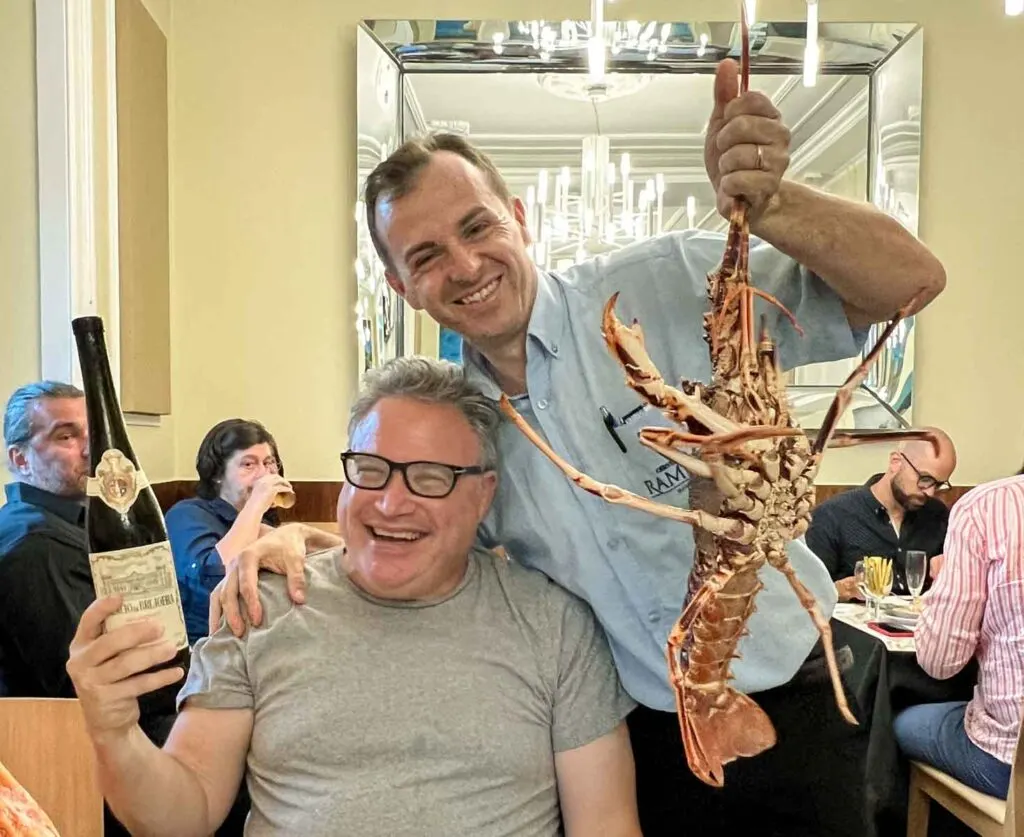
We get that Americans are accustomed to tipping. It’s part of America’s restaurant culture and is an absolute must from sea to shining sea. However, in case you didn’t get the memo, Portugal is in Europe, not America.
Unlike American servers, Portuguese employees are paid a higher base wage and receive other government benefits like universal healthcare and college tuition. This means, unlike in the USA, restaurant guests don’t pay the bulk of a server’s salary. Accordingly, tipping is not customary with Portuguese people or with European nationals like the Germans, Swedes, Dutch and Swiss.
However, there’s nothing wrong with leaving a little something extra in recognition of excellent service. We recommend leaving a couple euros or rounding the bill up to the nearest 0 or 5. There’s no need to leave a 20% tip in Portugal. There’s also no need to feel pressure when servers flat-out ask for tips after hearing your American accent. It’s fairly well known among European restaurant workers that Americans love to tip generously wherever they travel.
Pro Tip
Don’t look for a tip line on Portuguese restaurant bills. It’s typically not included since tipping is not customary in Portugal.
2. Don’t Assume Starters On The Table Are Free
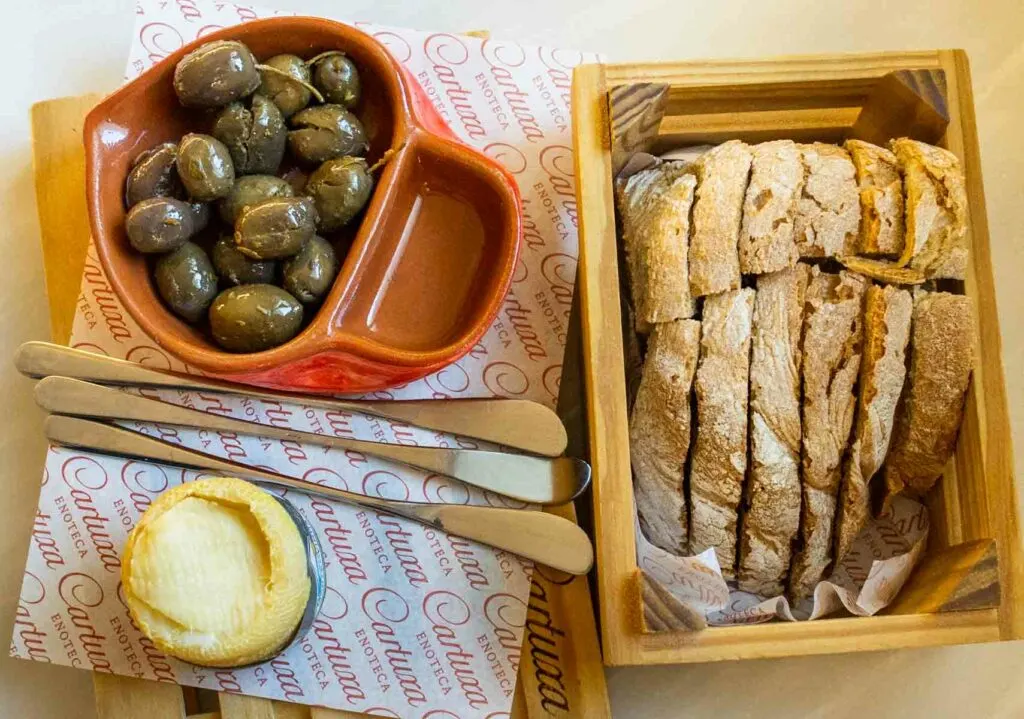
Portuguese restaurant workers are friendly folks who greet guests with smiles and keep the wine flowing. However, don’t overestimate this friendliness when it comes to starters (couvert) that magically appear on most restaurant tables.
Portuguese starters aren’t free. While they’re not usually expensive, there’s typically a cost for each pad of butter (manteiga), piece of bread (pão) and bowl of olives (azeitonas). You’ll want to approach items like cheese (queijo) and dried ham (enchidos) with extra caution as they can be pricey.
Pro Tip
It’s perfectly acceptable to ask the price of the starters that appear on your table if you didn’t order them. It’s also perfectly acceptable to send some or all of them back. It’s comes down to your budget and hunger level.
3. Don’t Order Tap Water At Restaurants
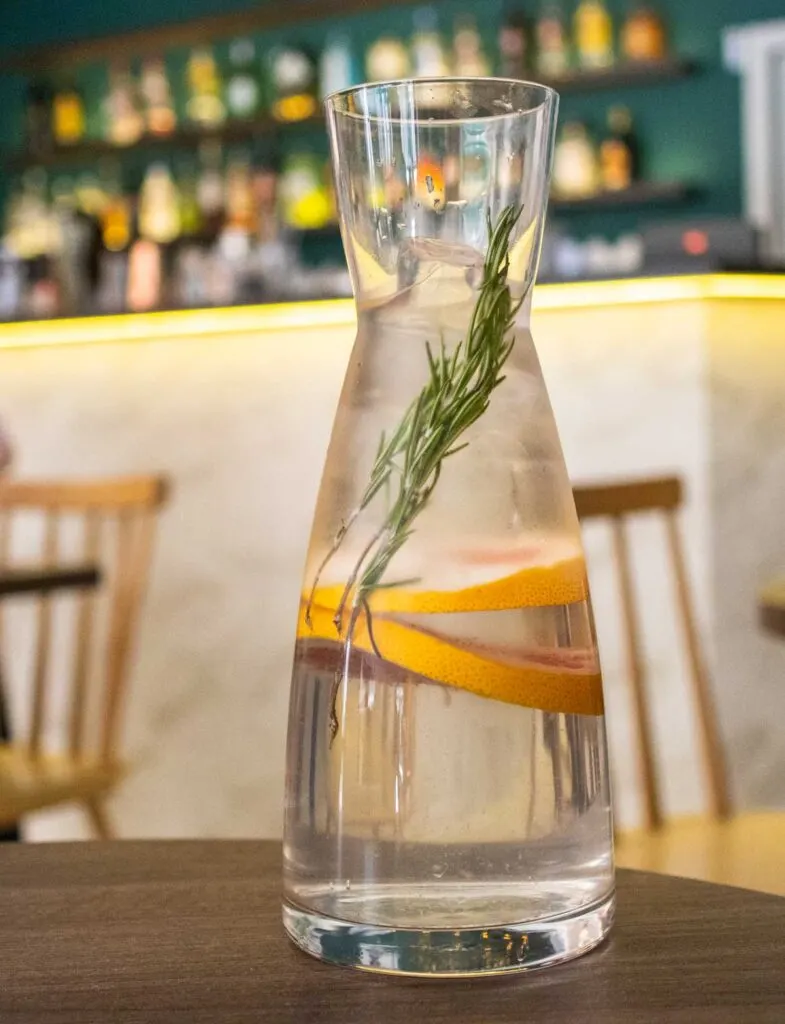
Portugal is a free country and you certainly can order tap water at restaurants. But should you?
Ordering water by the bottle seems to be a long-running trend all over Europe as well as in other parts of the world. But wait, you say: “Does that mean the tap water in Portugal is bad for you?” No! As a member of the European Union, Portugal is required to offer its citizens clean, treated drinking water.
We’re unsure how the trend of ordering bottled water in European restaurants became the acceptable behavior standard. It may have been born of a desire to increase profit margins or maybe the beverage industry marketed bottled water more effectively in Europe. Whatever the case, it’s considered normal to order and drink bottled water in European countries like Portugal.
Specify if you want sparkling (com gás) or still (natural) when you order water at Portuguese restaurants. We prefer sparkling water since that’s how we roll but there’s no bad choice between the two.
Pro Tip
Feel free to order tap water if that’s your preference. Be aware that you may get a funny look in addition to the requested tap water.
4. Don’t Fear The Francesinha
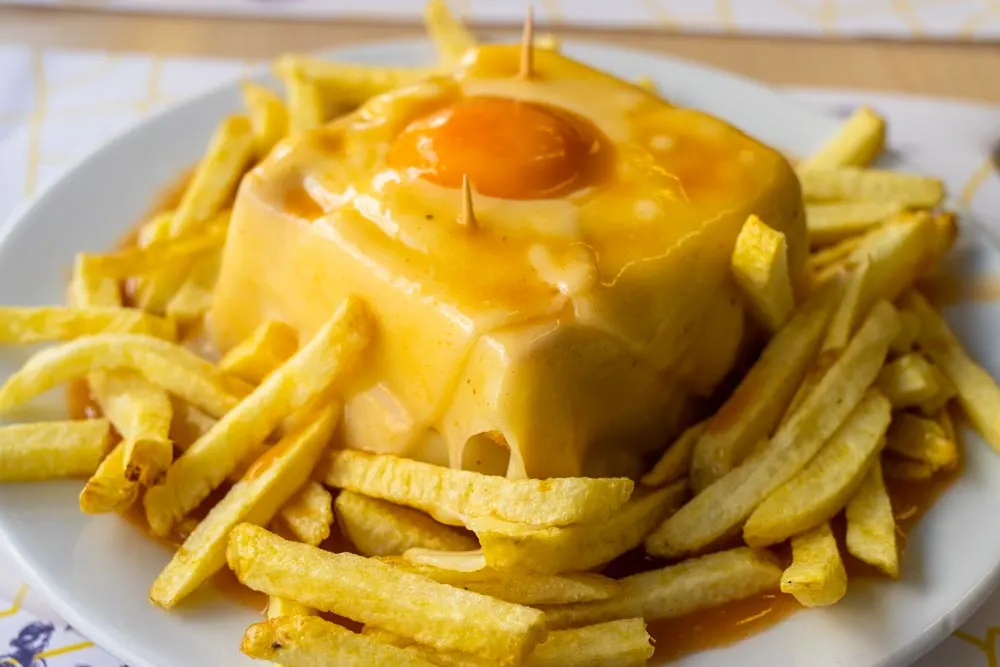
We often describe Porto’s francesinha as a heart attack on a plate. It’s the kind of sandwich that you don’t want to eat too often considering its ingredients which include steak, ham, chourićo, sausage, cheese, tomato sauce and a fried egg. And that’s not counting the fried potatoes that complete the dish.
We also describe the francesinha as delicious because that’s also what it is. It’s usually big enough to share and, unlike most sandwiches, requires utensils.
Discover more special sandwiches to eat around the world.
5. Don’t Confuse Squid And Cuttlefish
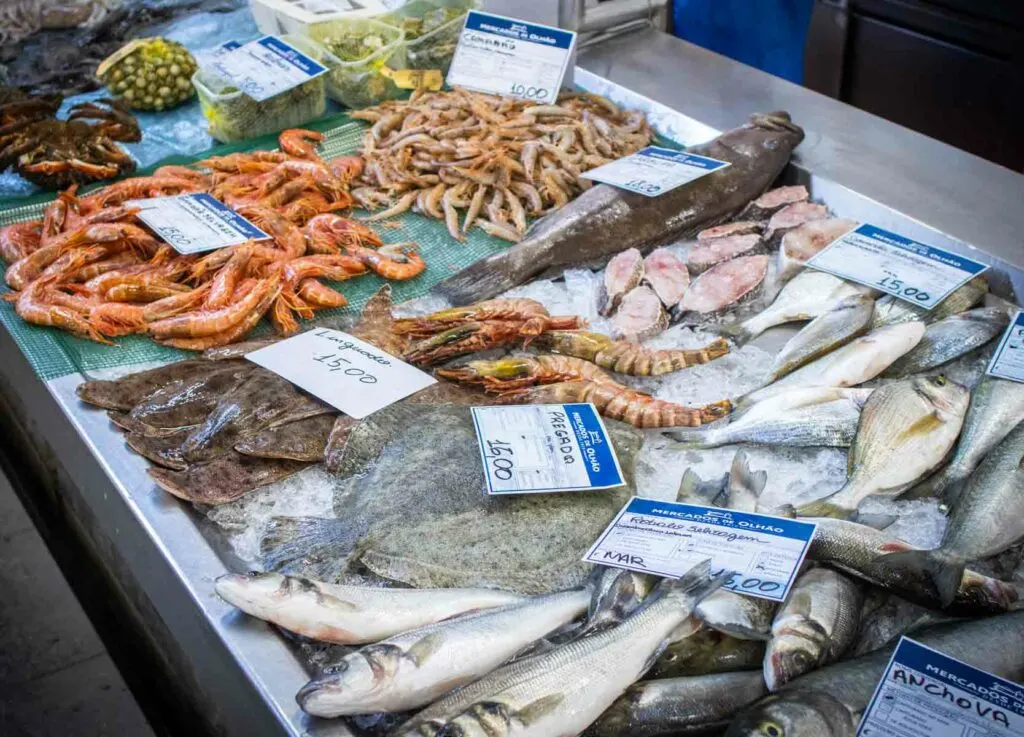
Squid and cuttlefish are cephalopods with tentacles and large heads. Both, when cleaned and prepared, make for an excellent fried feast. But it would be a mistake to confuse the two as the same.
Squid (lulas) are comparatively small when compared to their cuttlefish cousins. They can be stuffed or chopped up and served in rice dishes. The Portuguese also like to eat squid in cans.
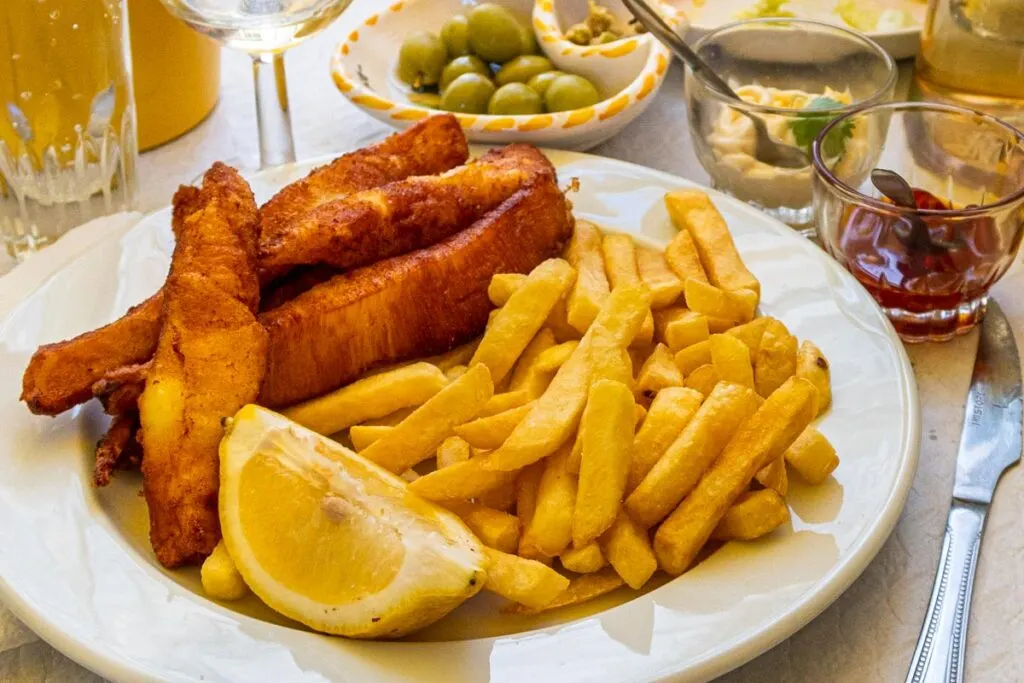
Cuttlefish (choco) has become a food favorite in Portugal especially when its fried. You’ll find cuttlefish that are as large as a basketball or even larger in the Setúbal region, just across the Tejo from Lisbon. Locals like eating choco frito, large thick strips of cuttlefish, breaded with a thin coating and fried golden brown.
We’ve also eaten uncleaned grilled cuttlefish, which can be served with the ink sack and bones still intact. The cuttlebone, a large, hard, oval shaped bone which helps the fish float, is one of nature’s curiosities.
Fun Fact
The ink from cuttlefish is used to color and flavor all manner of Mediterranean dishes. It’s also something you’ll want to keep away from your shirt.
6. Don’t Assume That Caldo Verde Is Vegetarian
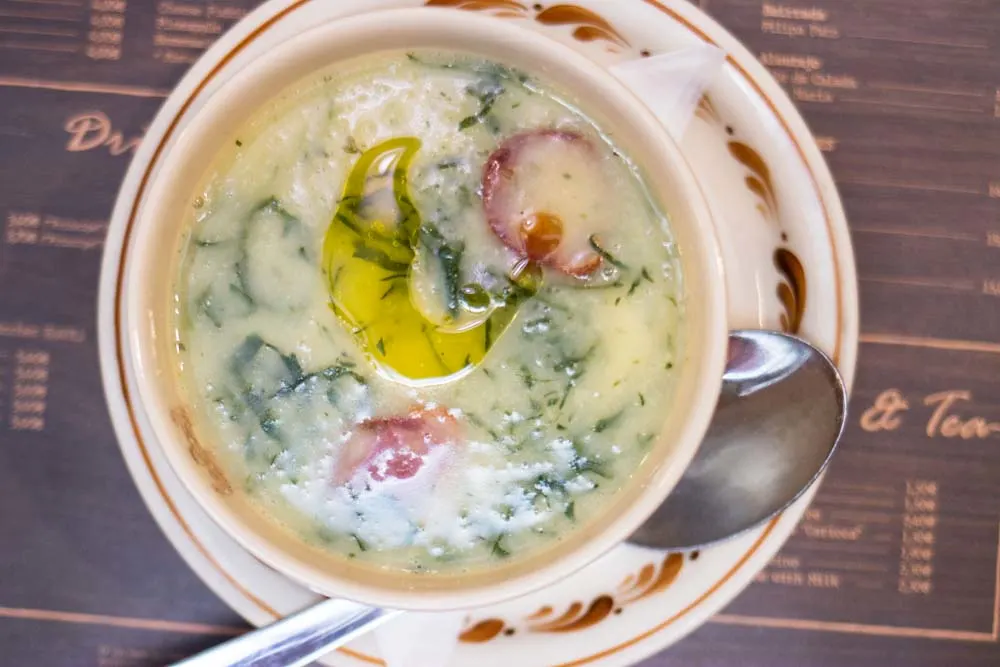
Vegetarians may be delighted at the thought of caldo verde, Portugal’s popular kale soup that literally translates to green broth. However, most bowls of caldo verde come with a slice or two of chouriço.
While we appreciate the smokey flavor that the chouriço provides, we get that vegetarians won’t feel the same way. The same applies to people who follow a kosher diet.
Discover more of the best soups in the world.
7. Don’t Say No To After-Dinner Drinks
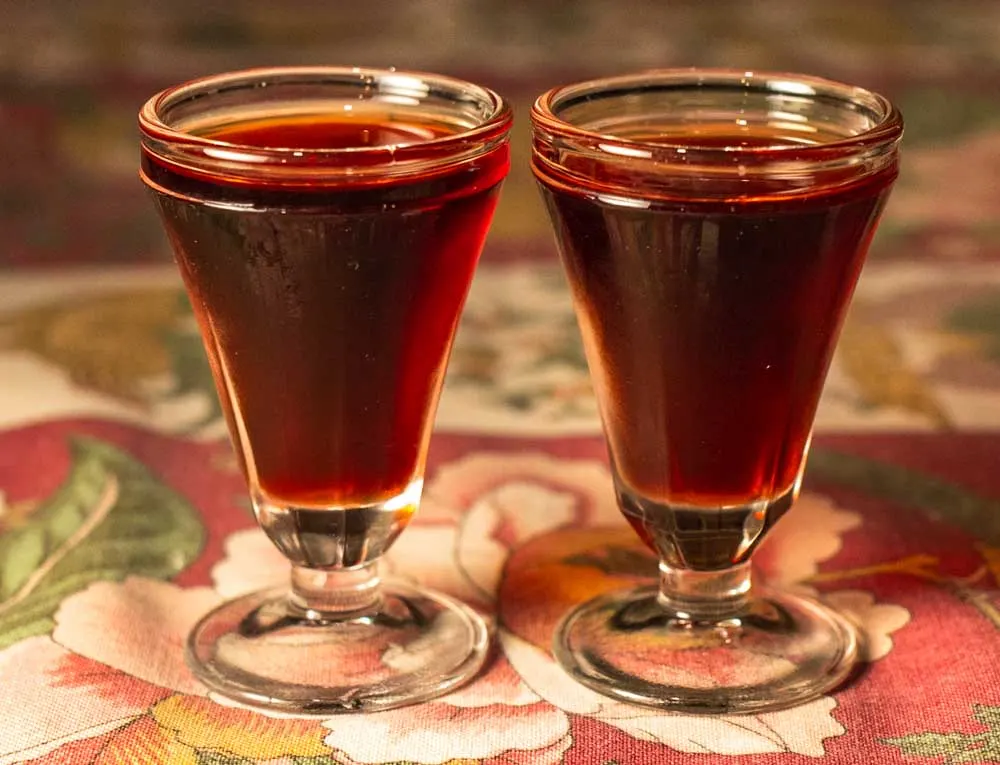
Dessert isn’t the only sweet option at Portuguese restaurants. The other option is liquid and comes in small glasses.
You may assume that we’re talking about port wine and you would be partially correct. However, port wine isn’t the only fortified wine produced in Portugal. If you stick with port wine, you’ll miss out on Madeira’s excellent fortified wine as well as wonderful fortified moscatel produced in the Setúbal region near Lisbon.
Other sweet Portuguese after-dinner drinks include ginjinha, a cherry liqueur produced in Óbidos and amarguinhua, an almond liqueur produced in the Algarve. Both are fine meal enders, especially when they magically appear on the table.
Pro Tip
Unlike unrequested starters, unrequested after-dinner drinks are typically complimentary. However, feel free to confirm this if you’re on a budget. Note that you’ll need to order and pay for better glasses of port, madeira and moscatel.
8. Don’t Rush
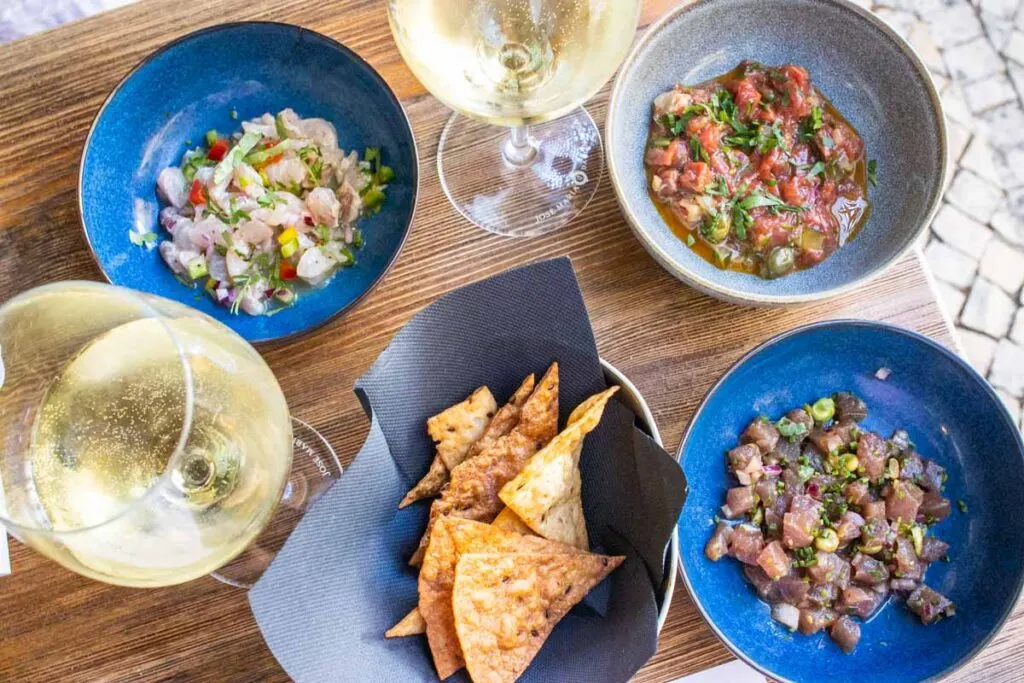
Most Portuguese meals are leisurely affairs involving multiple courses and a glass of wine or two or three. Servers don’t rush patrons out the door, partly since that’s against the country’s culinary culture and partly because they’re not working for tips.
Use this situation to your advantage. Put away your phone and/or laptop. Eat slowly. Savor every sip. It may seem weird at first but you’ll quickly appreciate the simple pleasure of relaxing while you dine.
Pro Tip
Let your server know if you’re in a rush. You may even want to request the bill when your food arrives if you’re dining with young children.
Frequently Asked Questions
Yes, food in Portugal is good. The cuisine features fresh seafood, local products, sweet desserts and wonderful wine.
Bacalhau, i.e. salt cod, is the most popular Portuguese food. It’s served in various ways, many of which involve potatoes.
The pastel de nata is the most popular dessert in Portugal. It’s basically a cream tart baked with plenty of sugar and egg yolk.
No. Tipping in Portugal is appreciated but not compulsory.
Check out our guide to eating in Portugal as well as our picks for the best Portuguese foods and the best Portuguese desserts before your trip.

About the Authors
Daryl and Mindi Hirsch
Saveur Magazine’s BEST TRAVEL BLOG award winners Daryl and Mindi Hirsch share their culinary travel experiences and recipes on the 2foodtrippers website. Since launching the site in 2012, they’ve traveled to over 40 countries in their quest to bring readers a unique taste of the world.
Original Publication Date: March 20, 2023

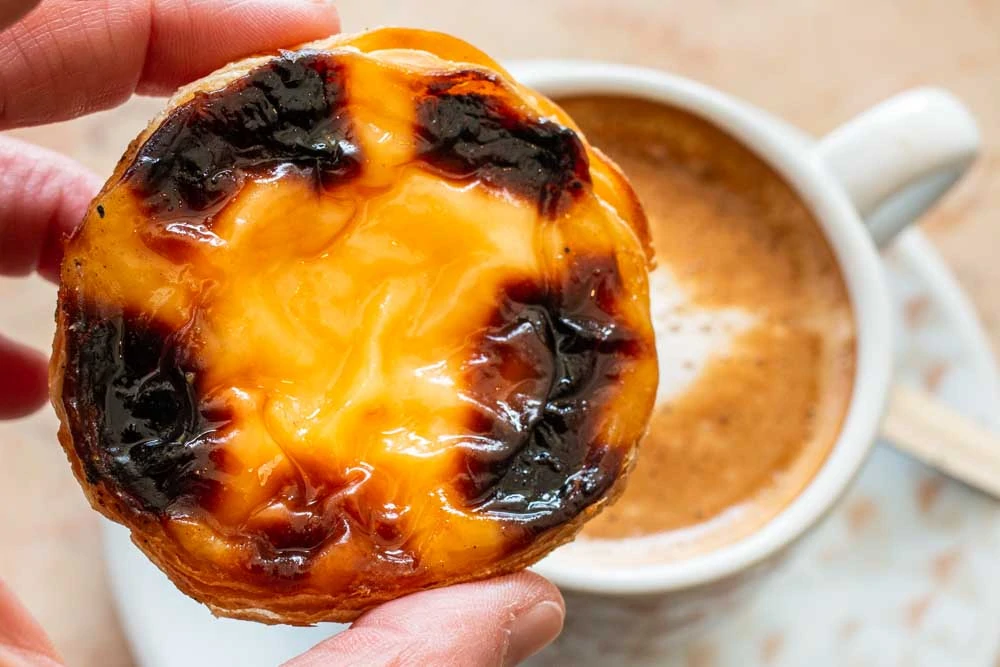
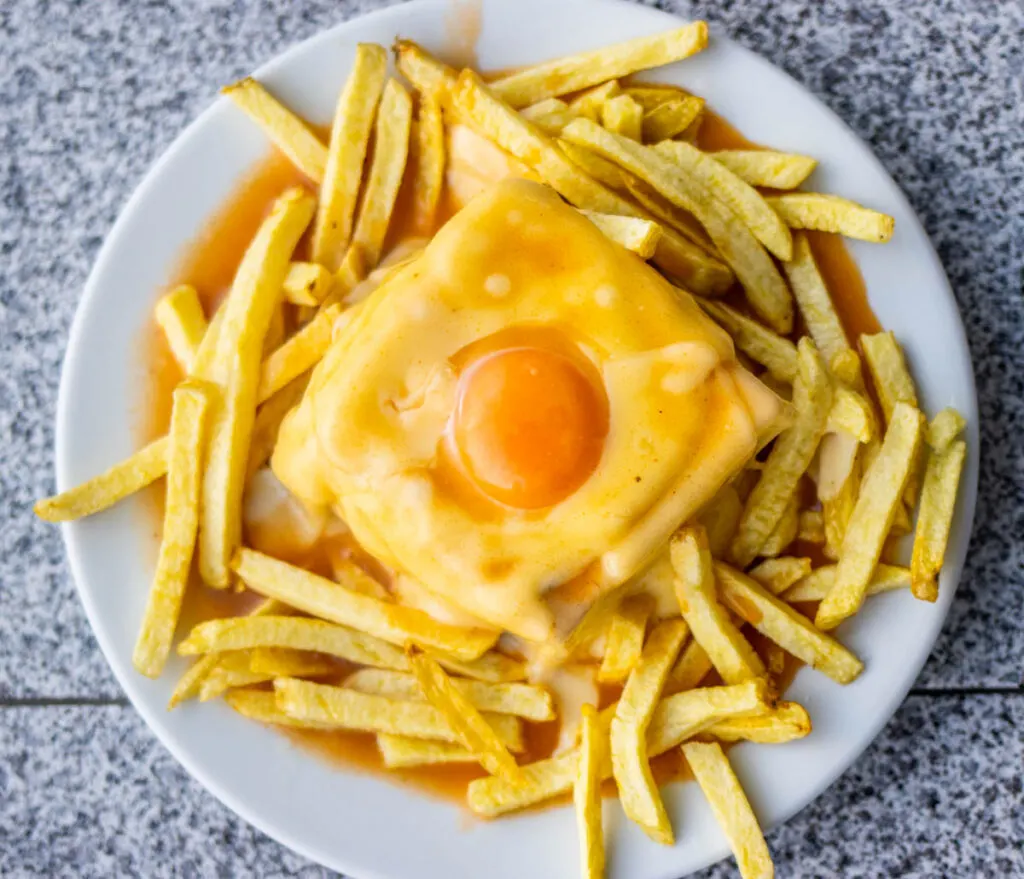
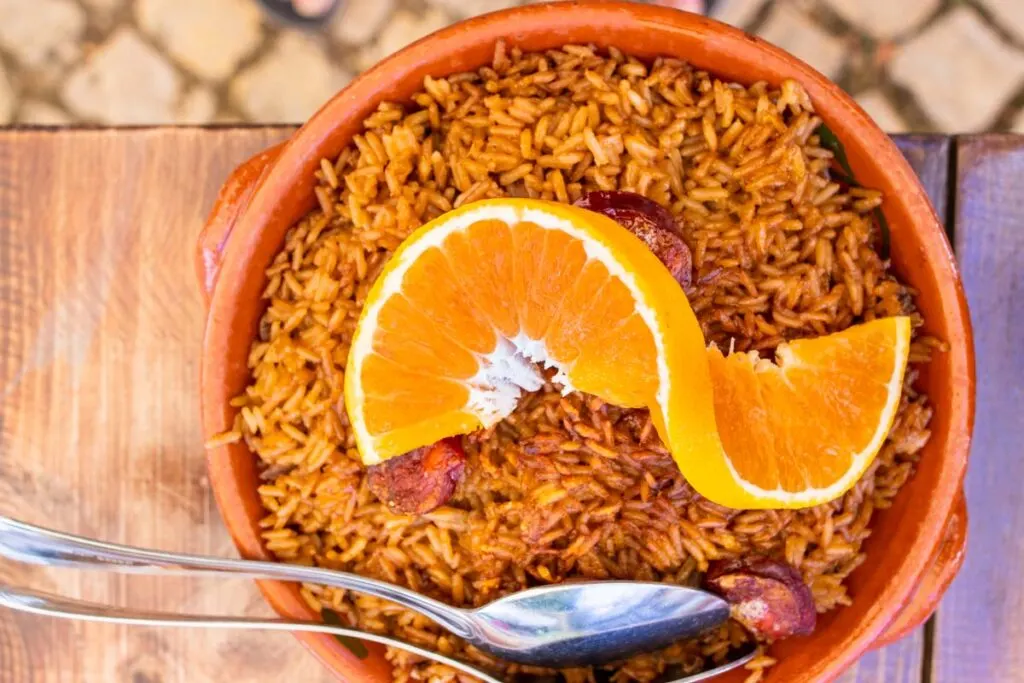
Sev
Saturday 21st of October 2023
As a foodie that has travelled all over the world and own two restaurants in Australia. I have to say, the food in Portugal has been terrible so far, and we are eating out every meal. Even the ones that say they are good online are actually not. Hoping some better fare comes along. We have spent most of the time in the Algarve so hoping the bigger cities are better…
mark
Tuesday 15th of August 2023
So, much exciting information that my wife and I are going on our 29th anniversary to Portugal. We love being in the outdoors and trying new foods. We are very active and love to find the hidden sites wherever we go. How many days would you suggest staying in Portugal to get the most out of our stay in your beautiful country? Thank you again for the great site. mark & nancy
Daryl and Mindi Hirsch
Friday 18th of August 2023
Travel is a personal experience and it would be unfair for us to project a given amount of time for any trip. There's so much to do here and one size doesn't fit all. Your best answer is to buy a top quality travel guide like Rick Steves or Lonely Planet and explore the country on your own for as many days as you can afford without overstaying your tourist visa.
Enjoy your trip!
Steve Axberg
Thursday 6th of April 2023
Hi Daryl! You don’t know me, but you know my wife Caroline Gutshall! (Back from the Garces days)
Your blog has been very helpful and much appreciated! Let me know if you and Mindi want to meet for some drinks.
Spike
Wednesday 22nd of March 2023
You say "You need to make reservations at any and all restaurants where you really want to eat in Portugal" and then recommend eating at tascas. I've eaten at tascas all over Portugal for seven years and never once needed a reservation. I suspect most don't take them anyway.
Daryl and Mindi Hirsch
Wednesday 22nd of March 2023
You're absolutely correct. We'll clarify that. That being said, there are some super popular tascas where a reservation may be a good idea especially if your time is limited by travel.